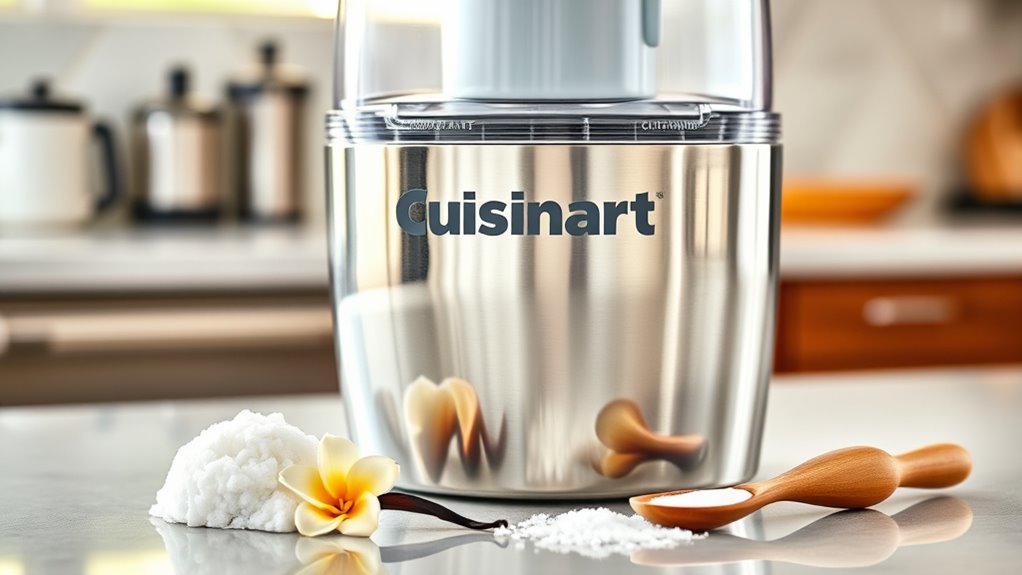To craft vanilla ice cream in a Cuisinart, start with a precise custard base: combine 2 cups heavy cream, 1 cup whole milk, 3/4 cup sugar, 1 tablespoon vanilla, and a pinch of salt. Heat gently until sugar dissolves, then temper 4 large yolks and return to a simmer until thick enough to coat a spoon. Chill thoroughly, then churn in your Cuisinart until scoopable. Freeze in a rigid container; you’ll improve texture with careful timing if you keep exploring.
Ingredients and Quantity
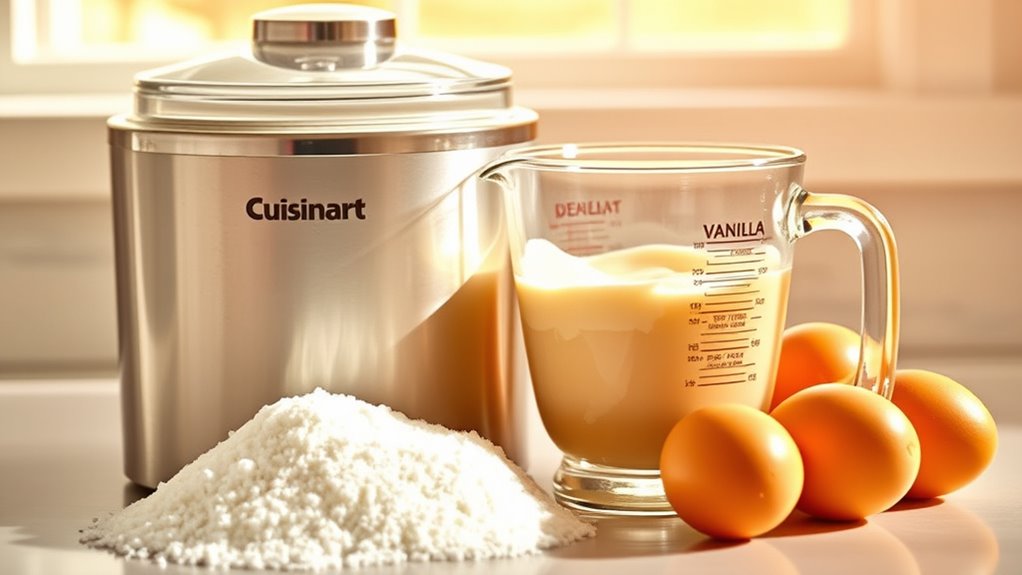
To make vanilla ice cream, gather the essential ingredients: 2 cups heavy cream, 1 cup whole milk, 3/4 cup granulated sugar, 1 tablespoon vanilla extract, and a pinch of salt. You approach measurements with precision, noting ingredient variations and keeping the ratios intact for consistency. You consider alternative sweeteners and their impact on texture, sweetness, and freezing point, evaluating each option against your standard. The method remains linear: measure, mix, rest, churn. Table below guides rhythm and flow, aligning steps with quantities.
| Column 1 | Column 2 | Column 3 |
|---|---|---|
| Ingredient | Quantity | Notes |
| Heavy Cream | 2 cups | Rich base |
| Milk | 1 cup | Whole preferred |
| Sugar | 3/4 cup | Adjust to taste |
| Vanilla | 1 tbsp | Pure preferred |
| Salt | pinch | Enhances flavor |
Preparations
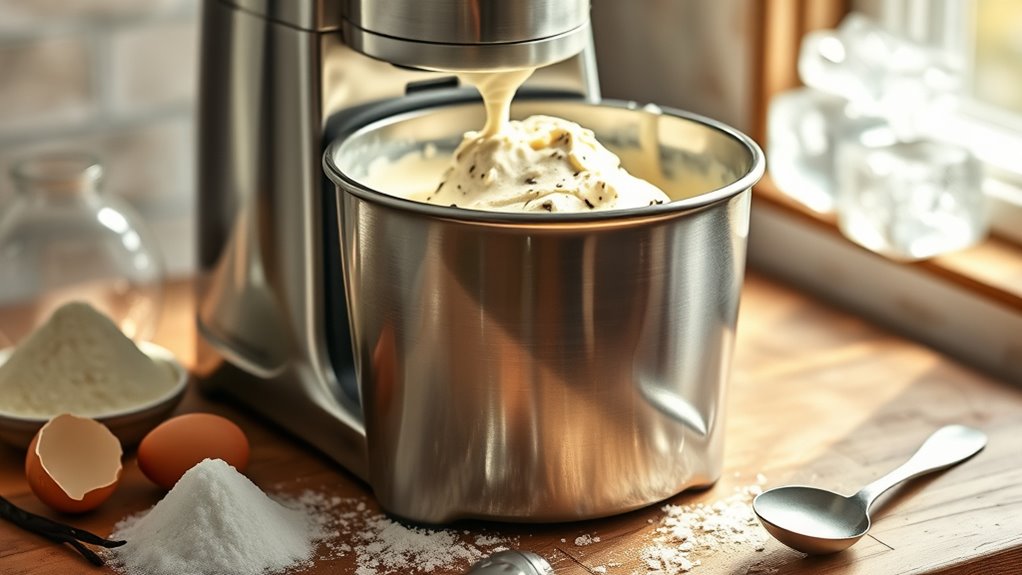
Before you begin the process, gather and measure all ingredients precisely, then combine them in a clean medium saucepan. You’ll heat gently, whisking until the sugar dissolves and the mixture looks smooth. Maintain steady temperature to avoid scorching, then temper the yolks by slowly streaming hot liquid into them, whisking continuously. Return the mixture to the stove, cook to a light nappe, and remove from heat promptly. Let flavors meld briefly, then strain to remove any solids for a pristine base. Chill thoroughly—ice cream preparation hinges on cold, stable temperatures. During cooling, verify ingredient selection aligns with desired texture and richness, adjusting if needed. Pour into your ice cream maker and churn until velvety. Proceed to freezing and serving, avoiding overmixing or underchurning.
How to Cook
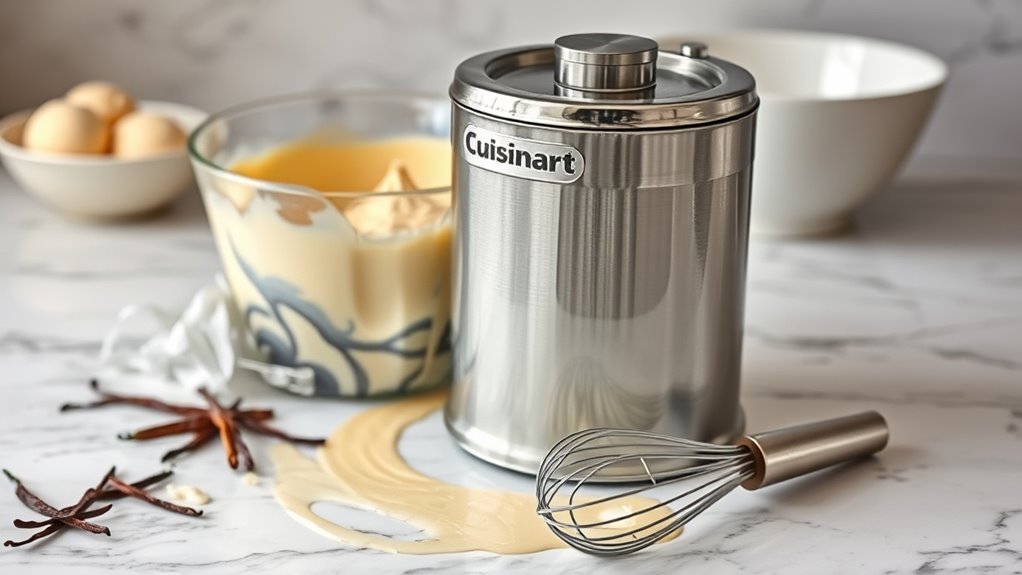
- Heat the base gently over controlled heat.
- Whisk continuously until the sugar dissolves completely.
- Monitor the mixture carefully to prevent scorching.
- Temper the yolks by gradually adding hot liquid while whisking steadily.
- Maintain a steady simmer (not a boil) to preserve texture and emulsification.
- Cook until the mixture thickens enough to coat the back of a spoon.
- Cool the base promptly after thickening.
- Strain the mixture to remove any lumps or clumps.
- Chill the base thoroughly before churning to ensure temperature stability.
- During churning, monitor viscosity and freezing progress to achieve ideal body.
- Focus on techniques that produce a clean, smooth mouthfeel.
- Experiment with flavor variations, balancing sweetness and aroma with precise timing.
How to Serve
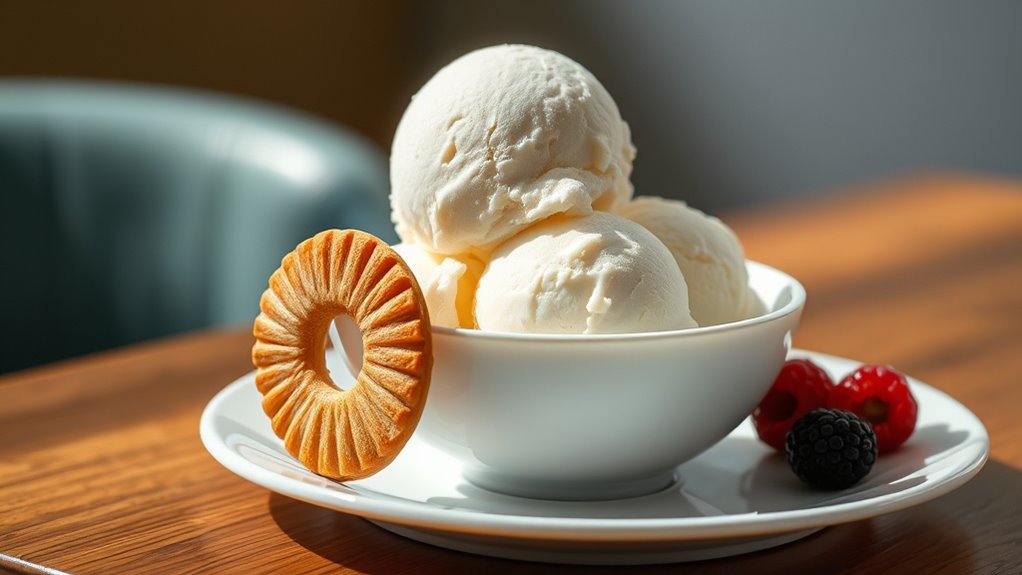
Vanilla ice cream is best served at the proper temperature and with deliberate presentation. You’ll plan portions and plating with exact timing, so texture remains firm yet scoopable. Begin by counting scoops per serving, aligning them to dish size and guest count. Temperature management matters: serve around -10 to -12°C (14–10°F) for ideal structure, then brief tempering to a soft edge before plating. For serving suggestions, pair with light accents that enhance vanilla without overpowering it. Consider a crisp tuile, a berry compote, or a dusting of cacao. Presentation ideas hinge on contrast: white cream, bright fruit, and polished surfaces convey precision. Use clear, minimal garnish and intentional spacing to emphasize the ice cream’s clarity and discipline.
Tips
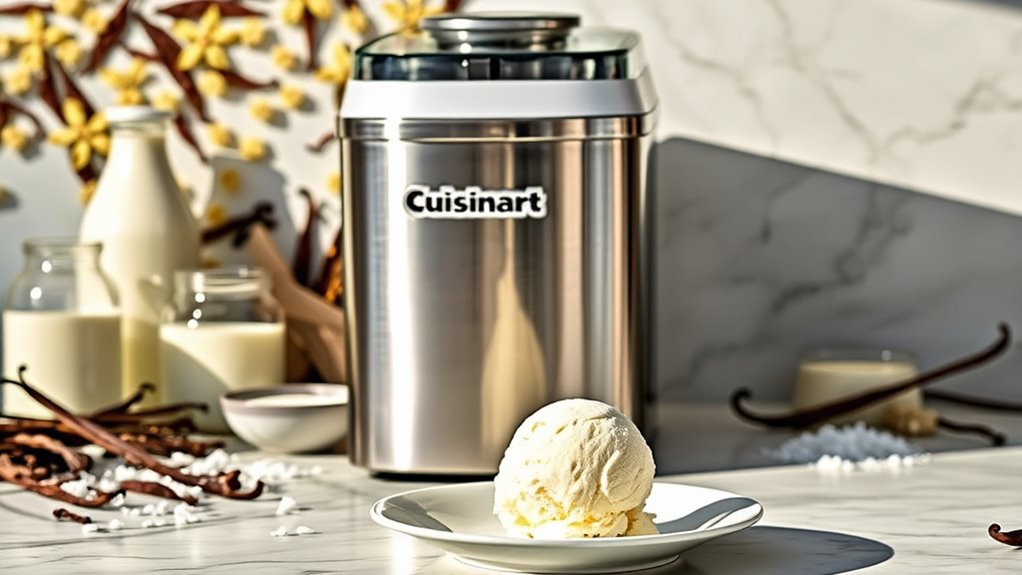
To optimize texture and consistency, guarantee your vanilla ice cream is churned and frozen in small, evenly sized batches to promote uniform freezing. When you tackle flavor variations, document base ratios first: dairy, sugar, and stabilizer, then adjust aromatics in minimal increments. Keep your Cuisinart controls clean and pre-chilled mix steady for predictable results. Don’t rush freezing; monitor viscosity and mouthfeel as you churn, stopping at the point where it resembles soft-serve for scooping flexibility. For storage tips, transfer to a rigid, lidded container to minimize ice crystal formation, and let it sit briefly at room temperature before serving. Label batches with date and composition to enable repeatable outcomes. Precision in timing and measurements yields consistent, high-quality results with freedom to experiment.
Food Value and Benefit
Ice cream provides a quick source of energy primarily from its lactose and sugars, complemented by essential micronutrients derived from dairy ingredients. Consuming this recipe offers nutritional benefits while fitting into a balanced diet when enjoyed in appropriate portions.
Benefits of eating this ice cream recipe include:
- Protein from dairy supports muscle maintenance and promotes feelings of fullness.
- Calcium and phosphorus contribute to strong bones and support metabolic processes.
- Vitamins A and D enhance immune system function and improve calcium absorption.
- Portion-controlled serving helps manage daily energy intake and supports fitness goals.
This recipe contains important vitamins and minerals such as:
- Vitamin A
- Vitamin D
- Calcium
- Phosphorus
Frequently Asked Questions
How Loud Is the Cuisinart Ice Cream Maker During Operation?
You’ll notice a moderate noise level during operation, with steady, rhythmic motors and faint clinks; overall, the noise level remains unobtrusive. You perceive operational sounds as predictable and manageable, enabling focused use and freedom to multitask nearby.
Can I Use a Dairy-Free Milk Base for This Recipe?
Can you use dairy alternatives for this recipe? Yes, you can, with precise measurements and method. You’ll explore dairy alternatives and flavor variations, maintaining texture by balancing fat and stabilizers while you pursue delicious, freedom-filled results.
How Long Does the Churner Need to Run for Soft Serve?
You’ll need about 20–25 minutes of churning to achieve soft serve. During the churning process, monitor texture; when it suggests “soft,” stop. You’ll reach ideal consistency quickly, balancing chill, air, and creaminess for flexible, precise soft serve.
Is Gelatin or Eggs Required for This Vanilla Base?
Gelatin isn’t required; you can use egg substitutes or dairy-based stabilizers. For a precise base, explore gelatin alternatives like cornstarch or carrageenan, and guarantee your egg substitutes mimic binding without compromising texture. You’re free to experiment, rigorously.
Can I Freeze Leftovers in the Machine for Storage?
Yes, you can freeze leftovers in the machine, but transfer promptly to rigid containers for best texture. Use proper freezing techniques, label dates, and store promptly; this guarantees safety, consistency, and controlled leftover storage with precise methodology.
